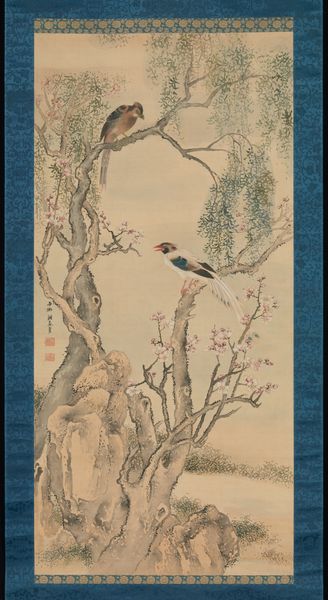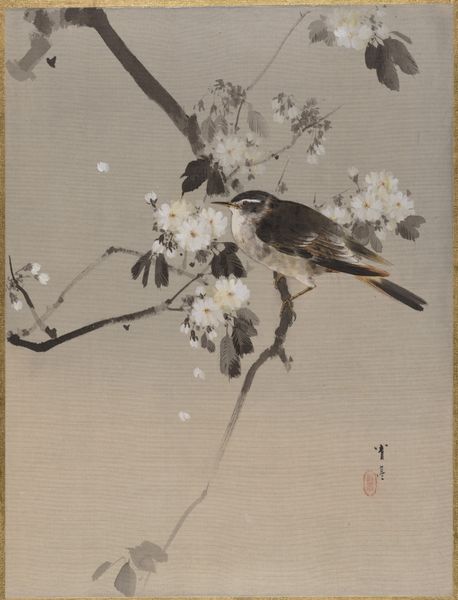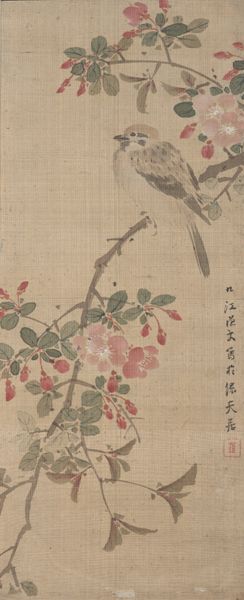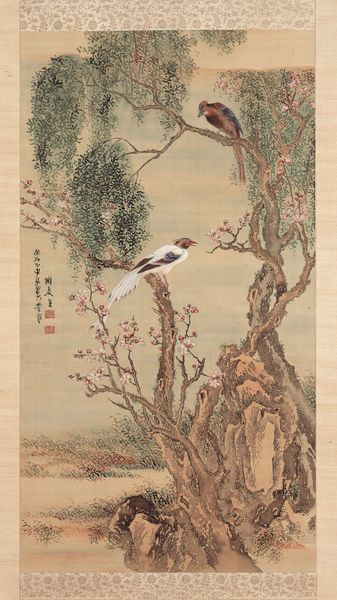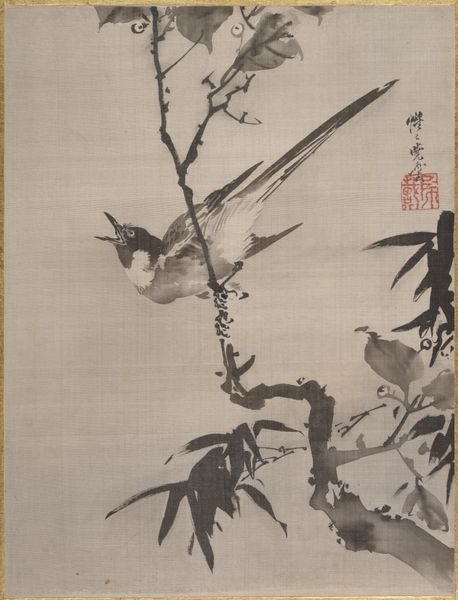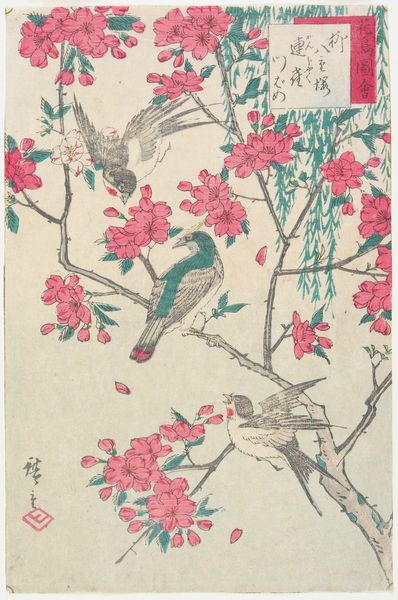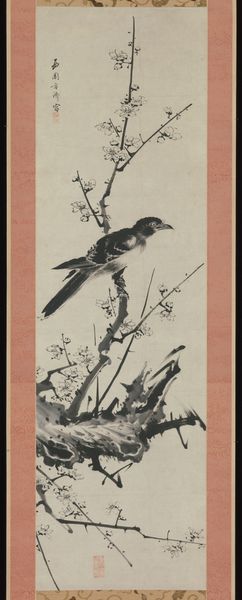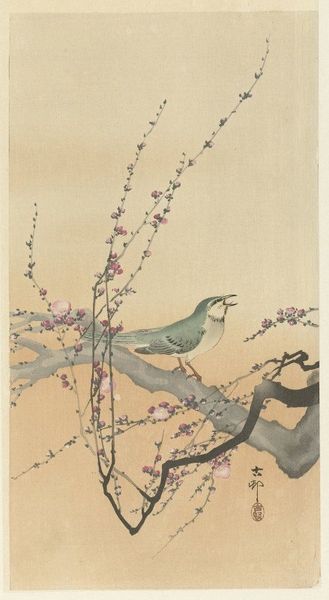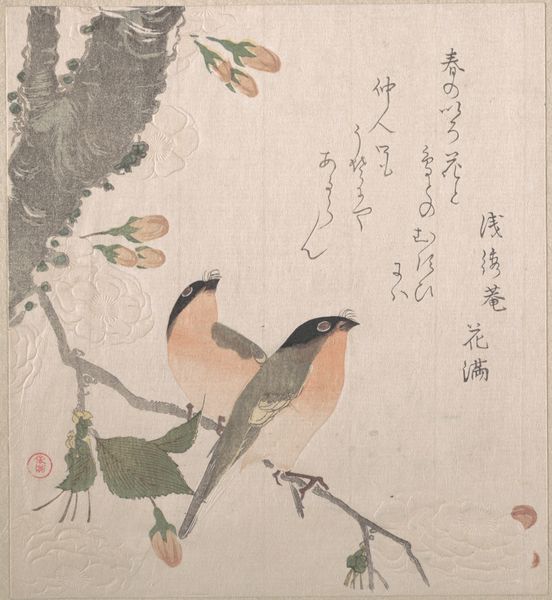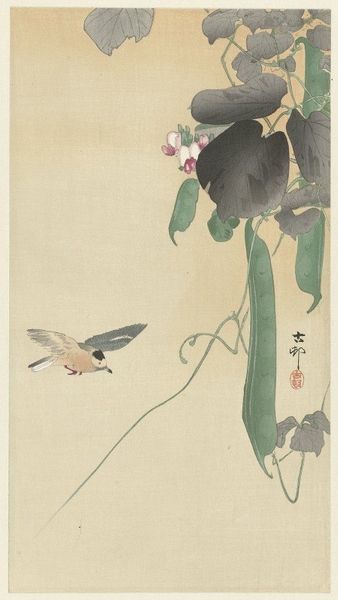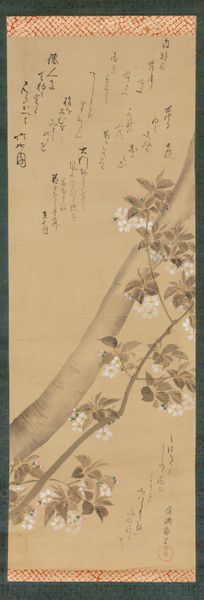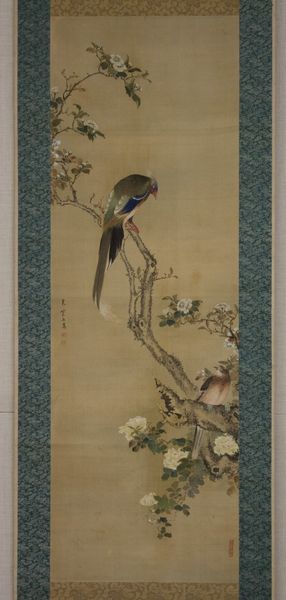![Birds and flowers [left of a pair of Birds and Flowers] by Nagasawa Roshū](/_next/image?url=https%3A%2F%2Fd2w8kbdekdi1gv.cloudfront.net%2FeyJidWNrZXQiOiAiYXJ0ZXJhLWltYWdlcy1idWNrZXQiLCAia2V5IjogImFydHdvcmtzLzRhNGI5Yzk3LWUzNTYtNGRjZi1hYTY2LTlhZmY0NWE3ODNiNi80YTRiOWM5Ny1lMzU2LTRkY2YtYWE2Ni05YWZmNDVhNzgzYjZfZnVsbC5qcGciLCAiZWRpdHMiOiB7InJlc2l6ZSI6IHsid2lkdGgiOiAxOTIwLCAiaGVpZ2h0IjogMTkyMCwgImZpdCI6ICJpbnNpZGUifX19&w=3840&q=75)
Birds and flowers [left of a pair of Birds and Flowers] c. 1840
0:00
0:00
painting, watercolor, hanging-scroll, ink
#
water colours
#
painting
#
asian-art
#
landscape
#
ukiyo-e
#
watercolor
#
hanging-scroll
#
ink
#
orientalism
#
botanical art
Dimensions: 50 1/2 x 22 1/8 in. (128.27 x 56.2 cm) (image)76 x 27 7/8 in. (193.04 x 70.8 cm)
Copyright: Public Domain
Nagasawa Roshū crafted this elegant painting of birds and flowers in ink and color on silk. The symbolism of birds in art, deeply rooted in cultural memory, often represents the soul's journey or a connection to the divine. Here, the birds flitting among the magnolias evoke a sense of freedom and transcendence. We find similar motifs across cultures, from ancient Egyptian depictions of the soul as a bird to Renaissance allegories of spiritual ascension. This recurring imagery suggests a universal human desire to transcend earthly bounds. Magnolias, symbols of nobility and purity, further amplify the emotional resonance. Think of Botticelli's Venus, often adorned with flowers, embodying similar ideals of beauty and virtue. These symbols tap into our collective subconscious, engaging us on a profound, emotional level. They are the echoes of ancestral longings and spiritual aspirations, reminding us of the cyclical nature of human experience, where ancient symbols resurface, evolve, and take on new meanings.
Comments
minneapolisinstituteofart about 2 years ago
⋮
Artists of the Maruyama School of painting combined Western realism with the indigenous penchant for decorative design to produce works of great naturalism and pleasing visual effect. Nagasawa Roshū, pupil of the progenitor of the school and adopted son of one of its leading masters, was himself a master of this style. This set of paintings is an impressive example of his work and reveals both Roshū's debt to his teacher, Maruyama Ōkyo (1733–1795), and to his adoptive father, Nagasawa Rosetsu (1754–1799). The refined, precise approach clearly suggests Roshū's fidelity to Ōkyo's fastidious style, while other elements reveal the unorthodox approach of Rosetsu, who was fond of juxtaposing subjects of vastly different scale.
Join the conversation
Join millions of artists and users on Artera today and experience the ultimate creative platform.
